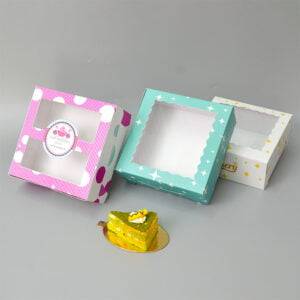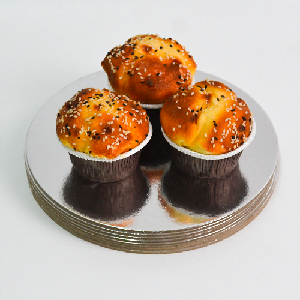When it comes to cake box packaging, the choice of materials plays a pivotal role in ensuring that your delicious creations not only arrive at their destination in perfect condition but also make a lasting impression. The right materials can enhance the presentation, freshness, and even sustainability of your cakes. In this comprehensive guide, we will explore the various materials available for cake box packaging and help you understand which ones are best suited for your specific needs.
1. Introduction
Cake box packaging is more than just a container; it’s a crucial part of presenting your cakes to customers or recipients. The choice of materials can impact not only the aesthetics but also the functionality and environmental footprint of your packaging. Let’s dive into the various materials available and determine which one suits your cake box needs best.
2. Cardboard: A Classic Choice
 2.1. Advantages of Cardboard
2.1. Advantages of Cardboard
Cardboard is a classic and widely used material for cake boxes. It offers excellent strength and durability, ensuring that your cakes remain protected during transport. Cardboard is known for its sturdiness, making it suitable for various cake sizes and weights.
2.2. Customization Options
Cardboard cake boxes are highly customizable. You can choose from various sizes, shapes, and designs to match your brand or the occasion. They can be easily printed with your logo, artwork, or special messages, enhancing the overall presentation.
3. Paperboard: A Lightweight Alternative
3.1. Benefits of Paperboard
Paperboard is a lightweight alternative to cardboard, making it ideal for smaller cakes, pastries, or cupcakes. It offers a sleek and elegant look, making your cakes visually appealing. Paperboard boxes are also less expensive than cardboard options.
3.2. Printability and Branding
Paperboard cake boxes are highly printable, allowing you to showcase your brand and creativity through custom designs and graphics. They are often used for packaging individual portions or smaller treats.
4. Plastic: Clarity and Durability
4.1. Transparent Appeal
Plastic cake boxes provide a clear view of the cake inside, making them perfect for displaying your creations. The transparency allows customers to see the cake’s design and freshness, which can be particularly appealing in a retail setting.
4.2. Reusability and Protection
Plastic cake boxes are durable and can be reused, adding value for customers. They provide a high level of protection, ensuring that delicate cakes with intricate decorations arrive intact.
5. Sustainable Materials: Eco-Friendly Options
5.1. Recycled Cardboard
Recycled cardboard cake boxes are an eco-friendly choice. They are made from post-consumer recycled materials, reducing the demand for new resources. These boxes can be recycled again after use, minimizing environmental impact.
5.2. Biodegradable Plastics
Biodegradable plastic cake boxes offer the clarity of traditional plastic but with an eco-friendly twist. They break down naturally over time, reducing their environmental footprint. These are a great choice for businesses aiming to be more sustainable.
6. Considerations for Choosing the Right Material
6.1. Cake Type and Size
Consider the type and size of cakes you offer. Larger and heavier cakes may require sturdier materials like cardboard, while smaller treats could be housed in paperboard or plastic.
6.2. Environmental Impact
Take into account your commitment to sustainability. If eco-friendliness is a priority, opt for recycled cardboard or biodegradable plastics. Ensure your choice aligns with your brand’s environmental values.
7. Best Practices for Cake Box Packaging
 7.1. Proper Sizing
7.1. Proper Sizing
Choose cake boxes that fit your cakes snugly but allow for easy removal. An ill-fitting box can damage your cakes and affect their presentation.
7.2. Interior Liners
Consider using greaseproof or moisture-resistant liners to protect the cakes from moisture, ensuring they stay fresh and visually appealing.
8. FAQs
8.1. Are cardboard cake boxes recyclable?
Yes, cardboard cake boxes are recyclable. They are made from paper pulp and can be recycled along with other paper products.
8.2. Can plastic cake boxes be reused?
Yes, plastic cake boxes can be reused if they are in good condition. Customers often appreciate the option to repurpose these boxes for other uses.
8.3. Are biodegradable plastics as durable as traditional plastics?
Biodegradable plastics offer good durability, but they may have a shorter shelf life than traditional plastics. It’s essential to store them properly to maintain their integrity.
8.4. Can sustainable cake boxes be customized with branding?
Yes, sustainable cake boxes can be customized with branding just like other materials. You can print your logo, designs, and messages on them.
9. Conclusion
Choosing the right material for your cake box packaging is a critical decision that can impact the presentation, protection, and sustainability of your cakes. Whether you opt for classic cardboard, lightweight paperboard, transparent plastic, or eco-friendly materials, each has its unique advantages. Consider your cake type, brand values, and environmental goals when making your choice. With the right material, you can ensure that your cakes not only taste exquisite but also look irresistible from the outside, leaving a lasting impression on your customers.
 2.1. Advantages of Cardboard
2.1. Advantages of Cardboard 7.1. Proper Sizing
7.1. Proper Sizing